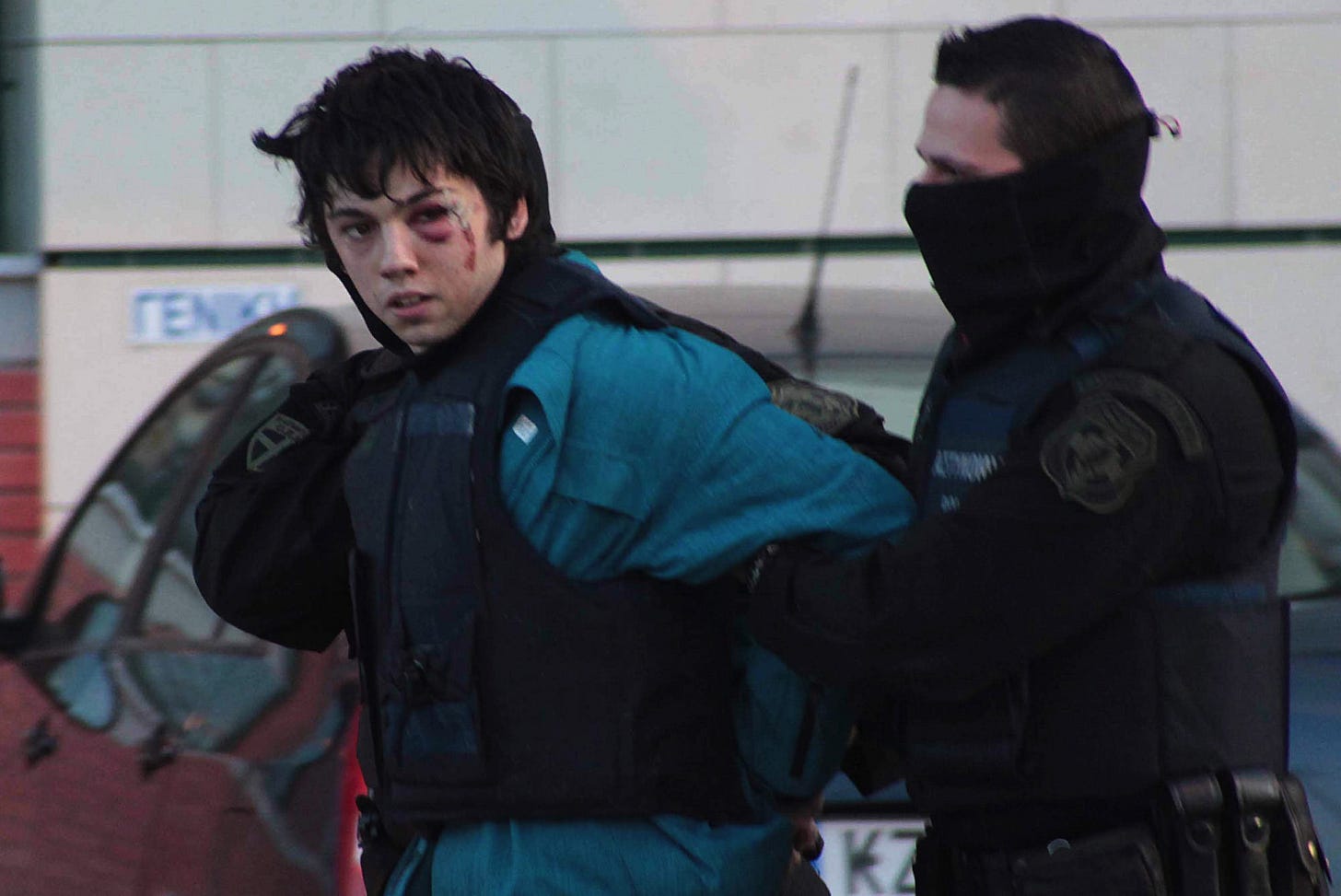A large blast ripped through the third floor of an apartment building in the central Athens borough of Ambelokipi, late on the evening of October 31st, tearing down walls, collapsing adjacent flats, blowing out glass and leaving external railings on balconies twisted and mangled. Firefighters responding to the explosion rescued one wounded woman from the rubble, “and later found [a] man’s body while using sniffer dogs to search the apartment for other survivors.” Police officers who arrived on the scene to investigate the explosion eventually recovered two handguns and ammunition from among the wreckage. They determined that the blast was caused by an improvised explosive device, which likely prematurely detonated during its deployment, killing the male militant tasked with placing and assembling the bomb. The explosive itself was apparently comprised of sophisticated materials used in either construction or military capacities.
The intended target of the bomb remains unclear at this moment.
The man killed in the blast was later identified by sympathetic anarchists as Kyriakos Xymitiris, and the wounded woman as Marianna Manourou, both in their 30s. Marianna suffered severe wounds from the blast, but was apparently discharged from the Evangelismos Hospital in Athens and transferred to Korydallos Prison 48 hours after her admittance to hospital, despite a lack of proper infirmary care at the prison itself. (Korydallos is an infamous prison in a suburb of Athens, which is known for housing accused left-wing and post-left terrorists, along with accused neo-Nazis belonging to the now-defunct party-cum-militia, Golden Dawn. Inmates from these prisons are often grouped together based upon affiliation, but are also commonly transferred to other facilities across the Greek mainland.)
Following the failed bombing, multiple raids and arrests were conducted. Caught up in these operations was a woman in her thirties, Dimitra Zarafeta, who was arrested at an airport while trying to flee abroad, and Dimitrios Papathanasiou, also accused of being apart of an emergent anarchist cell based within the Athens area. They are charged with forming a terrorist organization and the manufacture of explosives.
Perhaps the most surprising of the arrests made after the bombing attempt was that of Nikos Romanos, an alleged founding member of the anarcho-nihilist urban guerrilla group, Conspiracy Cells of Fire (CCF). Romanos was arrested on November 18, and is set to testify before a prosecutor on Friday, November 22. According to his defense team, he is expected to deny any involvement in the bombing. They further add that since his release from prison in 2019, he has had no involvement in militant activity or contact with militant movements or individuals.
In early December of 2008, when he was only 15, Romanos witnessed his best friend, Alexis Grigoropoulos, fatally shot by a Greek police officer following a minor verbal altercation. The murder sparked the Greek Uprising, which began on December 6, 2008, and lasted for weeks, during which the streets of Greek cities became war zones of angry protesters and anarchist black blocs clashing heavily with police—particularly the notorious riot unit, the MAT—trading stones, bottles and Molotov cocktails for tear gas and crowd control munitions. It is worth noting that despite his participation in other militant groups—such as those adjacent to the Informal Anarchist Federation, or FAI—both Romanos and CCF deny his involvement in the group, and he was later acquitted of participating in CCF, despite many Greek authorities still maintaining he was one of the group’s “leaders”.




